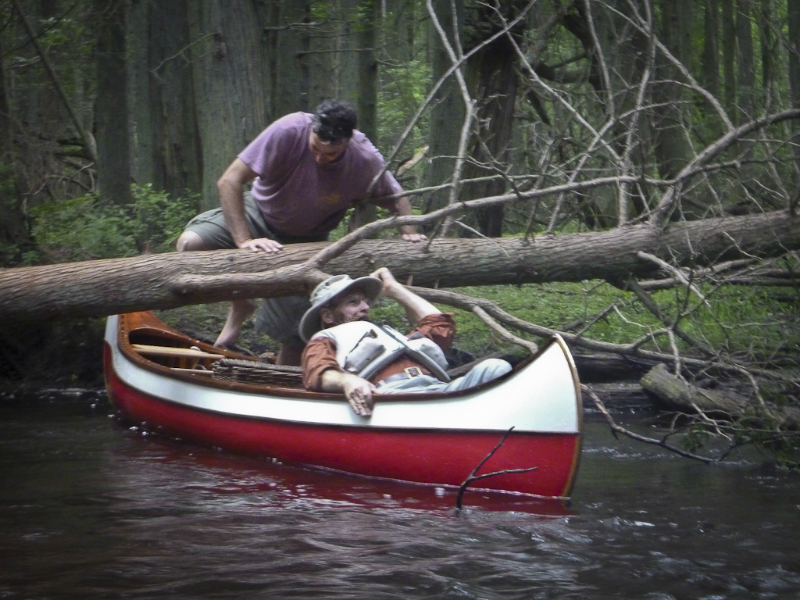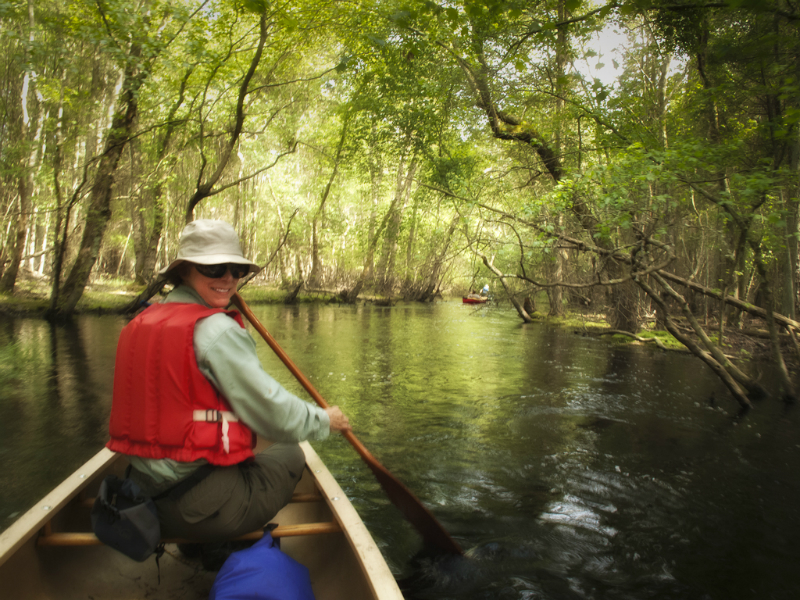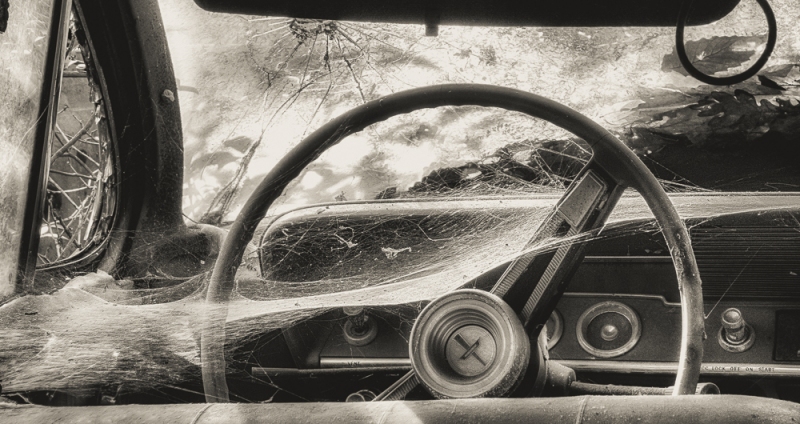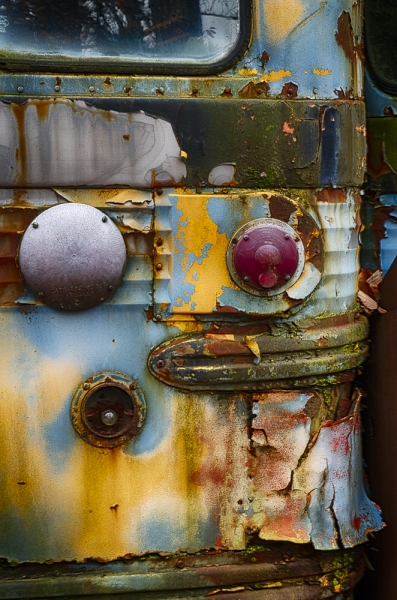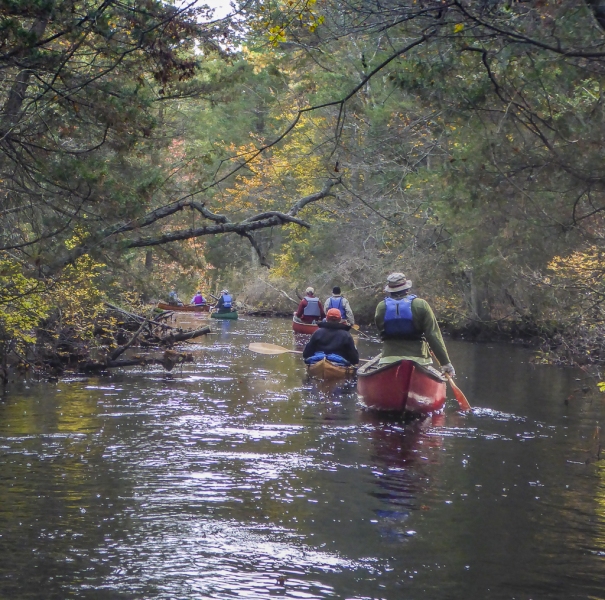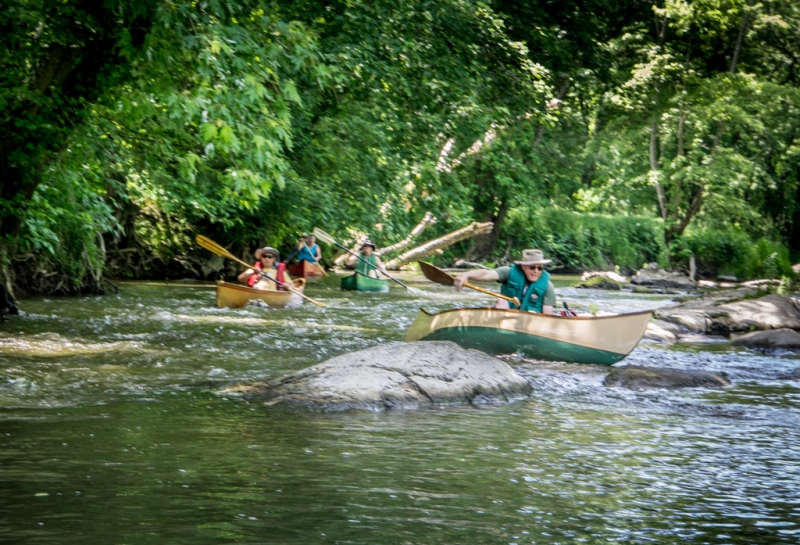 Home of the Jersey Devil, cranberry bogs, and some of the best canoeing rivers, the Pine Barrens in South Jersey is one of the most sparsely populated areas and the largest body of open space between Richmond and Boston. This heavily forested area of coastal plain covers 650,000 acres of undeveloped land containing pygmy pines and cedar trees. The Pine Barrens support a unique and diverse spectrum of plant life, including orchids and carnivorous plants such as pitcher plants.
Home of the Jersey Devil, cranberry bogs, and some of the best canoeing rivers, the Pine Barrens in South Jersey is one of the most sparsely populated areas and the largest body of open space between Richmond and Boston. This heavily forested area of coastal plain covers 650,000 acres of undeveloped land containing pygmy pines and cedar trees. The Pine Barrens support a unique and diverse spectrum of plant life, including orchids and carnivorous plants such as pitcher plants.
Many rivers meander through the pines. The water is a rich, burnt-sienna color of some of the cleanest water anywhere. The “tea-color” is a result of tannic acid from the roots of cedars lining the river banks.
 Some of the rivers we have enjoyed in the Pinelands are the Mullica River, Wading River, Oswego River and the Batsto River. Depending on the water levels, these canoe trails can be challenging; quick turns and obstacles such as downed trees can make navigation difficult. Our most recent trip included members of the Wooden Canoe Heritage Association – all seasoned paddlers. But the fast waters and multiple obstacles resulted in some run-ins with nature. Our friend Mike unintentionally tested the waters twice, Barclay got pinned by a tree and had to battle the branches to break free, and Michael took a nice gash to the top of his head from a low branch. But despite the unintended excitement, we had a beautiful paddle on a spectacular spring day.
Some of the rivers we have enjoyed in the Pinelands are the Mullica River, Wading River, Oswego River and the Batsto River. Depending on the water levels, these canoe trails can be challenging; quick turns and obstacles such as downed trees can make navigation difficult. Our most recent trip included members of the Wooden Canoe Heritage Association – all seasoned paddlers. But the fast waters and multiple obstacles resulted in some run-ins with nature. Our friend Mike unintentionally tested the waters twice, Barclay got pinned by a tree and had to battle the branches to break free, and Michael took a nice gash to the top of his head from a low branch. But despite the unintended excitement, we had a beautiful paddle on a spectacular spring day.
Located in the Pine Barrens is Historic Batsto Village, restored to its mid-19th century state. It is like taking a step back in time when visiting this bog iron and glass making industrial center which flourished from 1770s-1860s.


